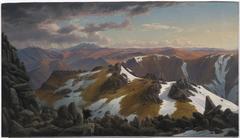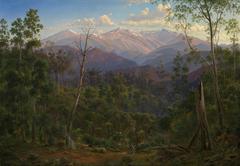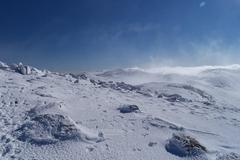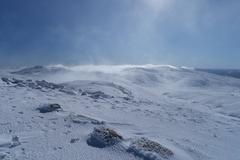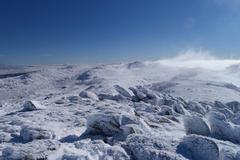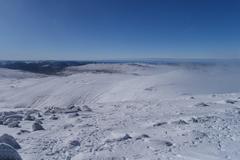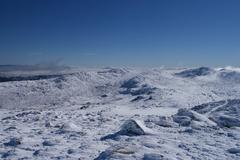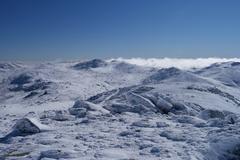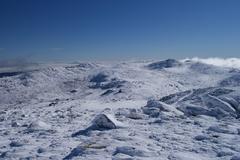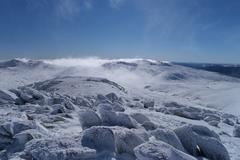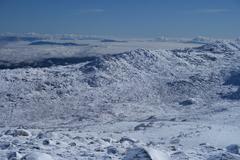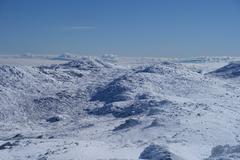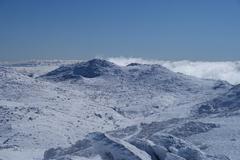
Comprehensive Guide to Visiting Kosciuszko Walk, Perisher Valley, Australia
Date: 19/07/2024
Introduction
The Kosciuszko Walk in Perisher Valley, Australia, is a captivating journey that combines the splendor of nature with profound historical and cultural narratives. This guide aims to provide a comprehensive overview of one of Australia’s most iconic destinations, offering insights into its historical significance, visitor information, and tips to make the most of your visit. Named after the famed Polish and American military leader, General Tadeusz Kościuszko, the walk traverses through the largest national park in New South Wales, Kosciuszko National Park, which was established in 1944 and spans approximately 6,900 square kilometers (NSW National Parks and Wildlife Service). The park is home to Australia’s highest peak, Mount Kosciuszko, standing at 2,228 meters above sea level, and offers a diverse range of flora and fauna, including several threatened species such as the mountain pygmy-possum and the corroboree frog (Australian Alps National Parks). Whether you are an avid hiker, a nature enthusiast, or someone interested in the rich cultural heritage of the region, the Kosciuszko Walk promises an enriching experience.
Table of Contents
- Introduction
- History and Significance
- Visitor Information
- Special Events and Guided Tours
- Conservation Efforts and Challenges
- Frequently Asked Questions (FAQ)
- Conclusion
History and Significance
Early Indigenous Significance
The Kosciuszko Walk holds profound significance for the Indigenous Australian communities, particularly the Ngarigo people. The area around Mount Kosciuszko, known as Targangil in the Ngarigo language, has been a site of cultural and spiritual importance for thousands of years. The Indigenous people used the high country for seasonal gatherings, ceremonies, and as a source of food and materials. The alpine environment provided unique flora and fauna, which were integral to their way of life. The Ngarigo people’s deep connection to the land is evident in their traditional stories and practices that have been passed down through generations (Australian Alps National Parks).
European Exploration and Naming
The history of European exploration in the region began in the early 19th century. In 1840, the Polish explorer and geologist, Count Paul Edmund Strzelecki, became the first recorded European to ascend the highest peak in mainland Australia. Strzelecki named the mountain “Mount Kosciuszko” in honor of the Polish and American military leader, General Tadeusz Kościuszko, who was a national hero in Poland and a supporter of American independence (Kosciuszko National Park).
Development of Kosciuszko National Park
Kosciuszko National Park, encompassing the Kosciuszko Walk, was established in 1944. The park covers an area of approximately 6,900 square kilometers, making it the largest national park in New South Wales. The establishment of the park aimed to protect the unique alpine environment, including its diverse ecosystems, rare species, and significant geological features. The park is home to Australia’s highest peak, Mount Kosciuszko, which stands at 2,228 meters above sea level (NSW National Parks and Wildlife Service).
Environmental Significance
The Kosciuszko Walk traverses a unique alpine environment that is home to a variety of rare and endemic species. The area is characterized by its diverse flora, including alpine herbfields, snow gums, and subalpine woodlands. The park is also home to several threatened species, such as the mountain pygmy-possum and the corroboree frog. The preservation of these species and their habitats is a key focus of conservation efforts within the park (Australian Alps National Parks).
Cultural and Recreational Importance
The Kosciuszko Walk is a popular destination for both domestic and international tourists. The walk offers stunning panoramic views of the surrounding alpine landscape and provides access to the summit of Mount Kosciuszko. The trail is well-maintained and accessible, making it suitable for hikers of various skill levels. The walk is particularly popular during the summer months when the alpine wildflowers are in bloom, creating a vibrant and picturesque setting (Visit NSW).
Historical Landmarks Along the Walk
Several historical landmarks can be found along the Kosciuszko Walk, adding to its cultural and historical significance. One notable landmark is the Seaman’s Hut, built in 1929 as a memorial to Laurie Seaman and Evan Hayes, who perished in a blizzard while skiing in the area. The hut serves as a shelter for hikers and a reminder of the challenges faced by early explorers and adventurers in the region (Kosciuszko Huts Association).
Visitor Information
Visiting Hours and Tickets
The Kosciuszko Walk is open year-round, but the best time to visit is during the warmer months from November to March. No tickets are required for the walk, but visitors may need to pay a park entry fee, which varies depending on the season. It’s recommended to check the NSW National Parks and Wildlife Service for the latest information.
Travel Tips and Accessibility
Perisher Valley is accessible by car, with parking available near the trailhead. Public transport options are also available, including buses from major cities. The trail is well-marked and suitable for all fitness levels, but it’s important to be prepared for sudden weather changes. Wearing appropriate clothing and carrying essential supplies such as water, food, and a first-aid kit is advised. For those with mobility issues, there are sections of the trail that are wheelchair accessible.
Nearby Attractions
While in Perisher Valley, visitors can explore other attractions such as Blue Lake, the Snowy River, and the historic Kiandra Goldfields. For those interested in winter sports, the Perisher Ski Resort offers a range of activities during the winter season.
Special Events and Guided Tours
The Kosciuszko Walk hosts various events throughout the year, including guided tours and educational programs. These events provide insights into the area’s natural and cultural history. Photography enthusiasts will find numerous spots along the trail to capture stunning landscapes and wildlife.
Conservation Efforts and Challenges
Conservation efforts within Kosciuszko National Park are focused on preserving the unique alpine environment and its biodiversity. The park faces several challenges, including the impacts of climate change, invasive species, and increasing visitor numbers. Climate change poses a significant threat to the alpine ecosystem, with rising temperatures and changing precipitation patterns affecting the distribution and survival of native species. Invasive species, such as feral horses and weeds, also pose a threat to the delicate alpine environment. Management strategies are in place to address these challenges, including habitat restoration, pest control, and visitor education programs (NSW National Parks and Wildlife Service).
Frequently Asked Questions (FAQ)
Q: What is the best time to visit the Kosciuszko Walk? A: The best time to visit is during the warmer months from November to March.
Q: Are there any fees for accessing the walk? A: No tickets are required for the walk itself, but there may be a park entry fee.
Q: Is the trail suitable for all fitness levels? A: Yes, the trail is well-marked and accessible for hikers of all skill levels.
Q: Are there guided tours available? A: Yes, guided tours and educational programs are available throughout the year.
Conclusion
The Kosciuszko Walk in Perisher Valley, Australia, is a site of immense historical, cultural, and environmental significance. From its Indigenous heritage to its role in European exploration and its status as a conservation area, the walk offers a rich tapestry of stories and experiences. Visitors to the Kosciuszko Walk can not only enjoy the stunning natural beauty but also gain a deeper understanding of the region’s history and the importance of preserving its unique environment. Plan your visit today and embark on a journey through one of Australia’s most iconic landscapes.
Call to Action
Ready to explore the Kosciuszko Walk? Check out our other posts for more travel tips and guides, and follow us on social media for the latest updates on Australia’s top destinations.
References
- Australian Alps National Parks. (n.d.). Learn about nature. https://www.australianalps.environment.gov.au/learn/nature.html
- Australian Alps National Parks. (n.d.). Learn about culture. https://www.australianalps.environment.gov.au/learn/culture.html
- Kosciuszko Huts Association. (n.d.). https://www.khuts.org/
- Kosciuszko National Park. (n.d.). Visit a park. https://www.nationalparks.nsw.gov.au/visit-a-park/parks/kosciuszko-national-park
- NSW National Parks and Wildlife Service. (n.d.). Visit a park. https://www.nationalparks.nsw.gov.au/visit-a-park/parks/kosciuszko-national-park

